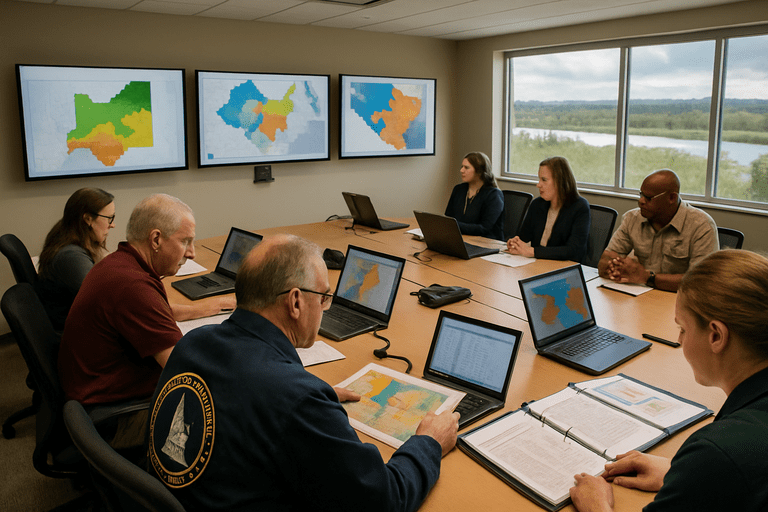🎧 Listen to the summary:
The administration’s turn to concentrate FEMA’s work on statutory core duties and push more responsibility to states is a clear, defensible effort to simplify national disaster response and to shorten chains of command, a change that promises more local control and faster tailored action in some places.
Policy changes laid out over the past year combine three measurable moves: easing federal flood‑resilience requirements, canceling or freezing major pre‑disaster mitigation grant programs, and reorganizing agency priorities to return “primacy” to states while reducing long‑running federal mitigation commitments. Implementation has proceeded through executive orders and internal FEMA memos that instruct disaster declaration teams to treat hazard‑mitigation awards as discretionary rather than automatic.
On the ground, the administration suspended the Federal Flood Risk Management Standard, halted new allocations from a multibillion‑dollar mitigation grant stream known as BRIC and has in some instances declined to include hazard‑mitigation funding within presidential disaster declarations. Those steps have frozen roughly billions in previously approved resilience dollars and stopped some new HMGP allocations that states expected.
Operationally, the shift will affect homeowners in flood and wildfire corridors, hospitals and utilities slated for resilience upgrades, and state emergency offices that must absorb planning and application work. FEMA’s own workforce has thinned, and watchdog reporting has flagged strained incident‑management capacity and questioned oversight of large grant awards, combining to complicate any rapid handoff of responsibilities.
Trade‑offs are explicit in the reporting. Reduced federal spending and clearer legal lines come at the cost of cancelled resilience projects, greater exposure for states without mitigation budgets, possible increases in long‑term Disaster Relief Fund payouts if preventable losses recur, and new administrative reviews that add steps to approval processes. Proposed sliding cost‑share ideas and congressional discussion drafts also introduce conditionality that could penalize states for weak mitigation efforts.
Foreseeable next steps include lawsuits by states and localities seeking restoration of funds, continued GAO and OIG scrutiny of staffing and grant oversight, and congressional proposals to redefine FEMA’s authorities and cost‑share formulas—formal oversight and legislation that will shape how, and how fast, these policy shifts are applied.
—
Deborah Cole reports on climate regulations, environmental mandates, and disaster response. She holds a degree in environmental studies from the University of Florida and worked in state-level emergency management before joining the press. Her reporting follows how policy meets practice across agencies, municipalities, and emergency zones.



